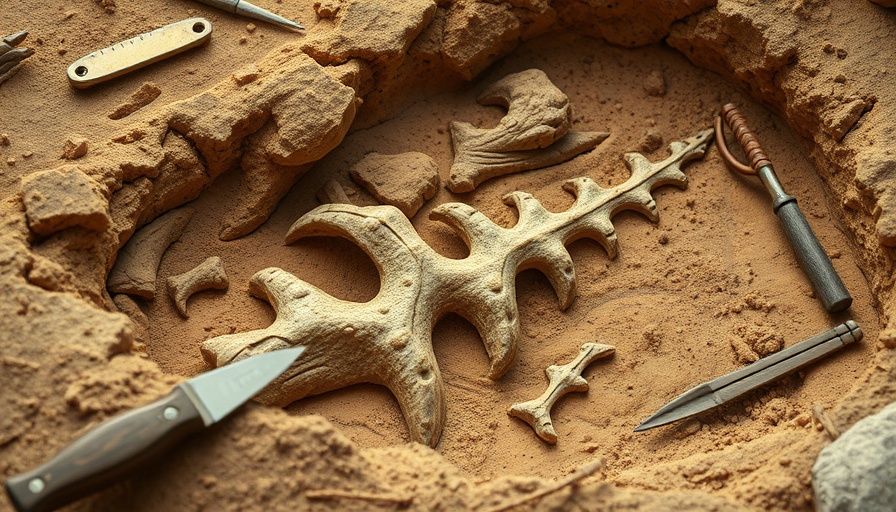
Uncovering the Hidden Vulnerabilities of Mighty Sauropods
A recent discovery in Brazil has transformed our understanding of the health challenges faced by some of the largest land animals ever to roam the Earth: the sauropod dinosaurs. Fossils unearthed from the Vaca Morta site in São Paulo state provide startling evidence of an aggressive bone infection, known as osteomyelitis, affecting these titanic creatures, previously thought to be impervious to such afflictions.
The Aggregate Impact of Osteomyelitis on Prehistoric Life
Osteomyelitis is a severe bone infection commonly seen in today’s mammals, birds, and reptiles, but discovering its remnants in fossilized bones is both rare and groundbreaking. The lesions observed on the sauropods' hip bones indicate that these creatures suffered significantly from this ailment, complicating narratives around their rapid extinction linked to events like the Chicxulub asteroid strike.
According to paleontologist Tito Aureliano, “While the existence of diseases affecting dinosaurs is known, findings akin to this one are incredibly scarce.” The fossilized bones reveal a chaotic architecture, with protruding bumps and deep internal lesions that starkly contrast with patterns of trauma from bites or environmental injury. The stark absence of healing suggests that the infection was a lethal presence at the time of death, possibly sealing their fate in a prehistoric world plagued by unseen microbial threats.
A Swampy Environment as a Breeding Ground for Disease
The paleoecological backdrop of these discoveries also remains crucial. The Vaca Morta formation, once a humid floodplain interlaced with slow-moving rivers and stagnant pools, created a perfect habitat for pathogens to flourish. Aureliano highlights that the clustering of these fossil remains indicates a possible local outbreak of the disease, spotlighting how environmental conditions can deeply impact species health.
Lessons from the Past: Environmental and Health Insights
This revelation about the sauropods provides valuable insights into both past and present ecosystems. The knowledge that these mighty dinosaurs could succumb to infections encourages a fresh evaluation of how environmental factors affect the health and longevity of species. As modern discussions around biodiversity and conservation efforts heat up, this ancient example serves as a reminder that even the most powerful creatures are not immune to disease in vulnerable environmental contexts.
Future Implications: Understanding Vulnerability in Ecosystems
As we learn from the past, the implications of this research reach into our current understanding of health complications faced by animals today. With climate change and habitat destruction continuing to place stress on wildlife, recognizing that various species, even at the top of the food chain, can suffer from microbial infections may guide conservation strategies. With these insights, scientists and policymakers can take proactive measures to protect vulnerable ecosystems from similar fates witnessed by the sauropods.
This unexpected chapter in the story of dinosaurs shows that our understanding of their extinction and lifestyle might be far from complete. New discoveries like these could reshape how we perceive prehistory, pushing researchers to consider other hidden threats faced by ancient species. The life of these colossal creatures has more lessons to share if we remain willing to delve deeper into the mysteries encapsulated in fossil records.
 Add Row
Add Row  Add
Add 




Write A Comment